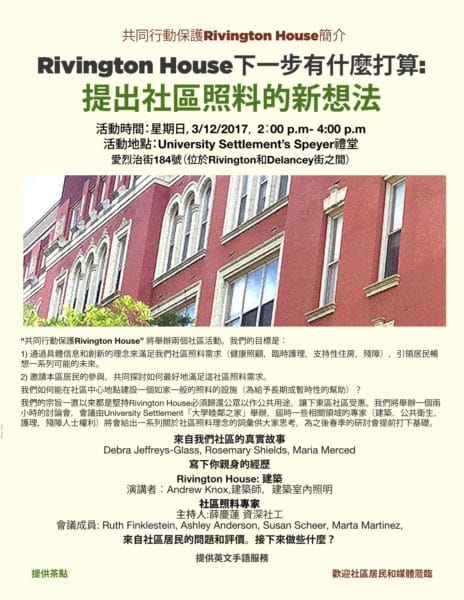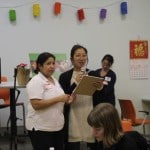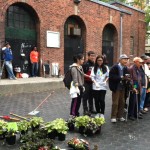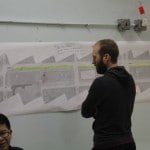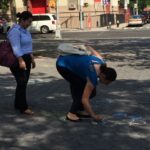In the Park an ‘Enlightened Witness’
We want to thank this officer for how he handled a young homeless man who was clearly struggling to keep a grasp on reality.
Two officers quickly moved in to stop his threatening behavior. The young man cried out for his ‘things’. This officer borrowed a fresh garbage bag and picked up every piece of the young man’s belongings (the guy had been fishing his clothes out of a storm drain and scattered them everywhere). The officers then called for an ambulance.
Father Greg Boyle -Homeboy Industries: “The measure of our compassion not in our service but our willingness to be in kinship – away from judgment… to stand in awe rather than stand in judgment -Alice Miller’s ’enlightened witnesses” who return people to themselves.”
Stop Repeal of ACA, Jobs for Youth, and Tuition Affordability!
Don’t Repeal the Affordable Care Act or unravel Medicaid!!
From Hand in Hand and Caring Across Generations :
“All of us need support or care in our lives in some form—but we need our government to ensure that everyone can afford and have access to this care.“
Please sign: Moveon.Org Petition
From Gale Brewer’s Manhattan Borough President’s Office:
Jobs for Youth
Preview of Forum: “What’s Next for Rivington House: Creating New Ideas for Community Care”
Remember Sunday is Daylight Savings Time: Move Clocks Ahead One Hour!
Previews from our (still) Free Press:
DNAinfo’s Allegra Hobbs: “Activist group Neighbors to Save Rivington House on Sunday will host an event addressing the dearth of healthcare facilities in the community and brainstorming how best to meet the needs of elderly and disabled locals.”
“Data shows that Lower Manhattan has been hit the hardest by a citywide spate of nursing home closures, having lost more than half of its long-term care facility beds within the last decade.”
BoweryBoogie: “Locals are encouraged to join and get vocal about how best to meet those needs. There will be a slew of panelists and speakers with diverse backgrounds, bringing real stories from the neighborhood, an architect’s perspective, and information stemming from community care experts.”
“Our position is and has been that Rivington House must be returned to public use for the benefit of our Lower East Side community…We will begin with a two-hour panel discussion, hosted by University Settlement House, where several experts (architecture, public health, care giving, disability rights) will give us a vocabulary of ideas to think about in preparation for a charrette later in the spring.”
The Lo-Down: “Rivington House Forum Takes Place on Sunday” Neighbors to Save Rivington House will hold a forum to which the public is cordially invited on Sunday afternoon, March 12th from 2 to 4 at Speyer Hall on the second floor of University Settlement, 184 Eldridge Street, New York City.”
“This special meeting is dedicated to discussing the possible future of Rivington House, a former public school and health care facility currently threatened with conversion into market rate/luxury private housing. At the meeting the coalition will assume the return of Rivington House to the community as the protected care facility it was intended to be, and will look at the future of care in general, needed here and elsewhere.”
Curbed NY Ameena Walker:”Rivington House Fate is Still Being Challenged by the Community”
“Mayor de Blasio has said that there’s nothing the city can do at this point to reverse the transaction, however, local advocacy group Neighbors to Save Rivington House have no intentions to take the blow lying down. Instead, they will hosts two “visioning events” that will discuss ways to return the property to the community, despite de Blasio claiming that it can’t be done..”
Thanks to all for this coverage.
Forum for Rivington House this Sunday March 12th @ 2pm Spanish, Cantonese, Sign & Mandarin interpretation
Sunday March 12th @ 2pm -Daylight Savings time- Set clocks ahead one hour!
We have an ‘improbable’, not impossible, road ahead re: the return of the building.
While that effort goes on, we will educate ourselves and our community on the larger, looming, struggle to care for our most vulnerable neighbors – all of us.
We are trying to reimagine how we create options for existing and future care needs, in the very center of our communities, where no one is left out or left alone to deal with mental or physical health challenges. And to reimagine how this beautiful facility overlooking a garden could be creatively used for the good of our community.
A former caregiver at Rivington House will speak out about her time there. Others will speak on disability rights/policy and the rights of older persons – and how to think about the caregivers they require to live their lives. We’ll have two neighborhood women talk about the impact on their lives without Rivington House. An architect who knows the ‘bones’ of the building and the (at the time) groundbreaking retrofitting done there (at quite a cost to taxpayers).
We’ll also have information on the Sanctuary Homes initiative to protect undocumented caregivers.
DNAinfo: “Long-Awaited Bathrooms in Stanton Storehouse Coming in 2019, City Says”
By Allegra Hobbs | March 6, 2017 10:14am
“More than two decades after community activists began rallying for the restoration of a derelict storage facility in Sara D. Roosevelt Park, the city …to restore the building’s bathrooms for public use….the design phase [for]…the Stanton Street building — Community Board 3 Parks Committee meeting on March 16…
Construction is slated to begin fall 2018 and will wrap up about a year later…
The park has one public restroom on Hester Street, near the southern end of the park, while a facility on Broome Street remains out of order due …
“We love to share with all of NYC, but it’s really too big a burden for this neighborhood and narrow park to be asked to have almost all of our buildings resources devoted to out-of-neighborhood needs,”
From LoDown: Essex Crossing Lottery Open & Grand Street Guild Suspects Owners Planning Towers
“The moment has finally arrived. Fifty years after hundreds of homes were demolished in the Seward Park Urban Renewal Area (SPURA), the first affordable apartments are becoming available on the site.
At midnight last night (Thursday, March 2), the housing lottery for site 5 of Essex Crossing as SPURA is now known, went live on the city’s housing website.”
Grand Street Guild Residents Suspect Their Owners Are Planning Two New Towers
“The Lower East Side is in the midst of its biggest construction boom in decades. Several projects now underway are reshaping the neighborhood. Now residents fear another large-scale residential development is about to be unleashed on a community weary of pile driving, barricaded sidewalks and cranes.”
Check out the full stories on the LoDown.
Parks Without Borders?
Learn more about the thinking behind the push to lower fences, etc. in Parks.
Thursday March 9th at 6 p.m. Thursday, the Department of Parks and Recreation will host author Peter Kageyama for its “Parks Without Borders” discussion series. Kageyama will speak with Department Commissioner Mitchell Silver about how “emotionally connecting with parks and public space can make communities stronger, healthier, and happier.”
From Park’s website:
“For the Love of Cities: How can connecting with parks improve communities?”
Thursday, March 9, 2017
6:00 p.m.–8:00 p.m.
“The Parks Without Borders Discussion Series explores ideas for the next generation of parks and public space and considers opportunities to build greener parks, healthier communities, and more resilient neighborhoods. Events will be held through 2017.
NYC Parks is excited to host author and internationally recognized community development expert Peter Kageyama for our March installment of the Parks Without Borders Discussion Series. Drawing from grassroots engagement strategies, Mr. Kageyama will focus on how emotionally connecting with parks and public space can make communities stronger, healthier and happier.
Speakers include Peter Kageyama, author of For the Love of Cities: The Love Affair Between People and Their Places and Love Where You Live: Creating Emotionally Engaging Places .The panel will be moderated by Mitchell J. Silver, FAICP, Commissioner, NYC Parks
Light refreshments will be served. This event is free, but seating is limited. Please register.”
Stanton Building in Sara Roosevelt Park (Building “A”)
NYC Park’s Department is moving ahead with design plans to restore, make available and accessible bathrooms for the Stanton Street Parks Building (known as Building “A”).
The bathrooms are much needed. We are grateful that these will get underway and hope for an even more rapid completion than 2019.
We thank Manhattan Borough President Gale Brewer and Council Member Margaret Chin for all their efforts and funding to realize these desperately needed facilities. Including showing up to visioning events and advocating for them!
Park’s Department will present the Designs for the Upcoming Bathrooms at the Community Board 3 Park’s Committee @ 6:30pm @ 30 Delancey Street at the BRC within Sara Roosevelt Park
Our Position on the Stanton Building:
We would like to see these bathrooms (or one of the Park’s staffed building’s bathrooms) opened 24/7 with security and maintenance staffing so that our homeless population has a place to use those facilities. It is the only humane, sanitary, dignified and safe way to address a very real need for the homeless and a real problem for those of us who try to keep this park clean. As the mayor has just said – homelessness isn’t going away anytime soon. So let’s provide folks with a bathroom that works and that is maintained. Thus making the bathrooms truly usable for the basketball & soccer players from the courts, children and parents from the playground and spray shower, Citi-bike users, casual park goers – everyone.
We think it would ensure that the homeless who are struggling already, are not set up to be targeted by (rightly) upset parents who fear using the bathrooms with their children or who fear the condition of the bathrooms.
We continue to advocate for the return of the building to community use as it is one of three out of four park buildings here that serve the borough of Manhattan and/or the entire 5 Boroughs of NYC.
We love to share with all of NYC, but it’s really too big a burden for this neighborhood and narrow park to be asked to have almost all of our buildings resources devoted to out-of-neighborhood needs.
Many of us also support, pending further community input, the idea of a shared building space that could be a drop-in center for those homeless in our park and a resiliency/bike repair/solar powering station.
This would rid us of the unsafe truck and car parking, thru-traffic on the ‘parkway’ of Stanton Street and the large unsightly and unsafe container outside the building.
The active community use would provide a sorely needed anchor for this section of the park. A section that is used by those who are in need of a daytime place to be (often because they live in shelters). It would make it safer and bring in more volunteer upkeep and beautifying for this section.
We would like to see a local, competent not-for-profit given a lease to manage the building and its programming and that would share space with other non-profits for meeting space, etc.
We received a D rating from NYer4Parks. We have to focus on how we realistically face our very real problems.
8th Annual Chaharshanbe Sori: the Persian/Zoroastrian fire-jumping holiday
Join La Plaza Cultural:
8th Annual Chaharshanbe Sori (AKA the Persian/Zoroastrian fire-jumping holiday)
Tuesday, March 14th, 2017 – 5:30-8:30PM
La Plaza Cultural, SW corner 9th Street and Avenue C
“What we will do: We will light small fires at sunset, then jump through the fire. It is customary to sing the phrase, “zardi-ye man az toh, sorkhi-ye toh az man” as you jump. Literal translation: my yellow is yours, your red is mine. This is a purification rite. Loosely translated, it means you want the fire to take your pallor, sickness, problems and winter blues and in turn give you health, warmth, and energy.
Background: The ancient Persian New Year, Nowruz falls on the spring equinox, March 20th, on the Gregorian (western) calendar. Nowruz is based on the solar calendar, which is the direct descendant of the Zorastrian calendar. Chah?rshanbeh-S?ri is an ancient festival dating to the Zoroastrian past of Persia, going back circa 2600 BC. It is a prelude to the ancient Persian New Year festival, which marks the arrival of spring. On the last eve of Wednesday of the Zoroastrian year, just before the spring equinox bonfires are lit in the streets from dusk to early hours of dawn. People jump through the fire, to exorcise the old year and its misfortunes and bring about regeneration.
In Farsi, Chaharshanbeh means Wednesday and Suri means red. The bonfires are lit at sunset to keep the sun alive till early hours of the morning. From among the Zoroastrian festivals some of the most important ones pertained to fire, a symbol of good health, cultivation, light, and purity. With the help of fire and light, we hope to see our way through to the end of the year, to the arrival of spring’s longer days. The human faces her ultimate fear by jumping over the fire. That cleansing act is necessary before the advent of spring and the Vernal Equinox.
Another ceremony this night is Ghashogh zani, (spoon banging). Traditionally, many, specially children, wrap themselves in cloaks and run through the streets banging on pots with spoons, and knocking on doors for treats, symbolically reenacting visits from the spirits of the ancestors. Possibly, Halloween is a Celtic variation of this night. It is customary to offer “ajeel”, a mix of nuts and dried fruit to people on this night.
In Iran Chah?rshanbeh-S?ri serves as a cultural festival for Persians, Jews, Muslims, Armenians, Kurds, Turks and Zoroastrians who celebrate it and other Zoroastrian traditions Shabe Cheleh, the longest night of the year in December, or Jashne-Mehregan, the fall festival.
•Parents are responsible for their kids safety! We make all efforts to keep event safe, but we need your help. Please keep an eye on your children.
Rain date will be Wednesday, March 15th. Feel free to bring dried fruits, juice or any other treats to share.”
- Go to the previous page
- 1
- …
- 121
- 122
- 123
- 124
- 125
- 126
- 127
- …
- 164
- Go to the next page






